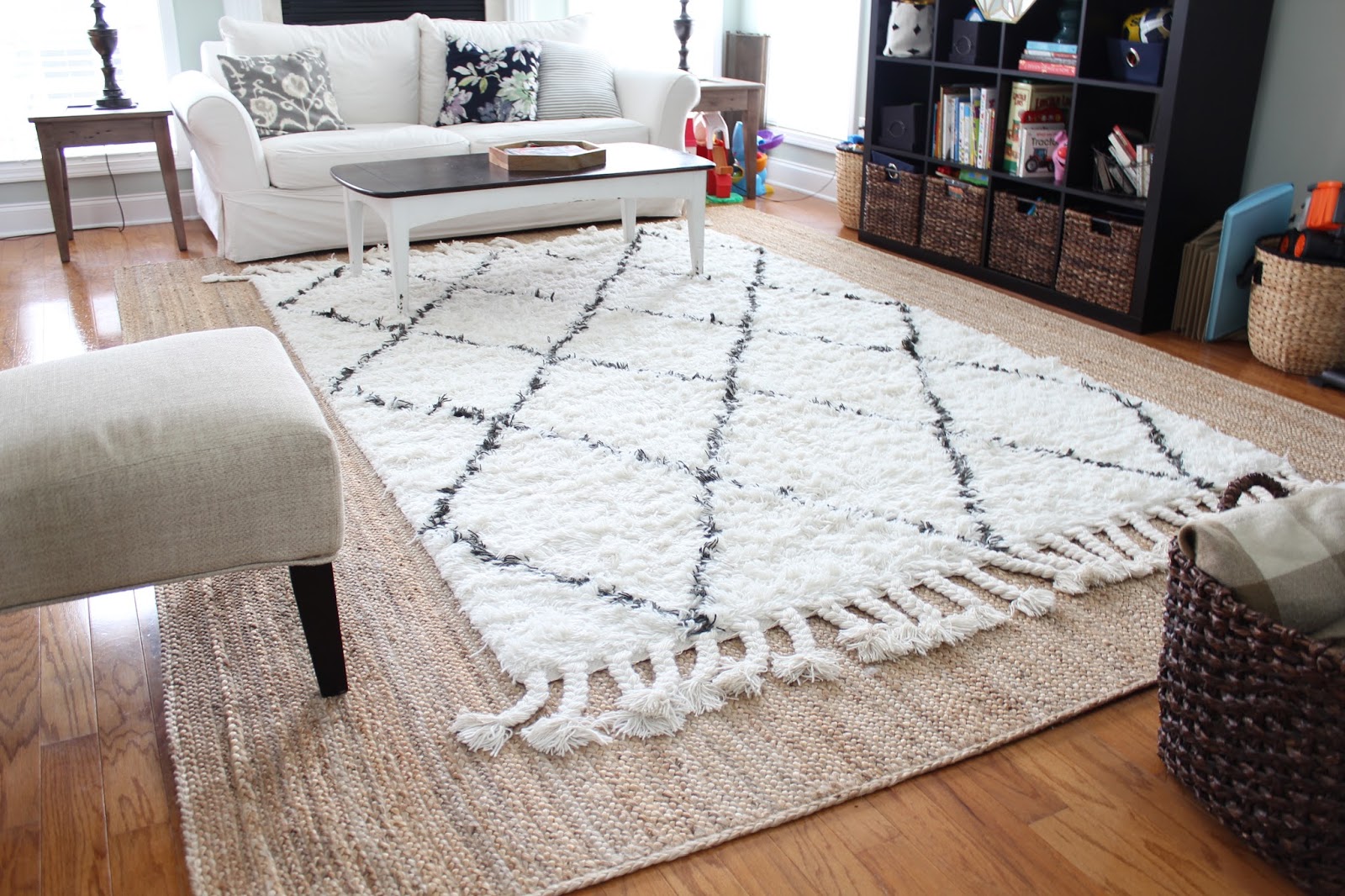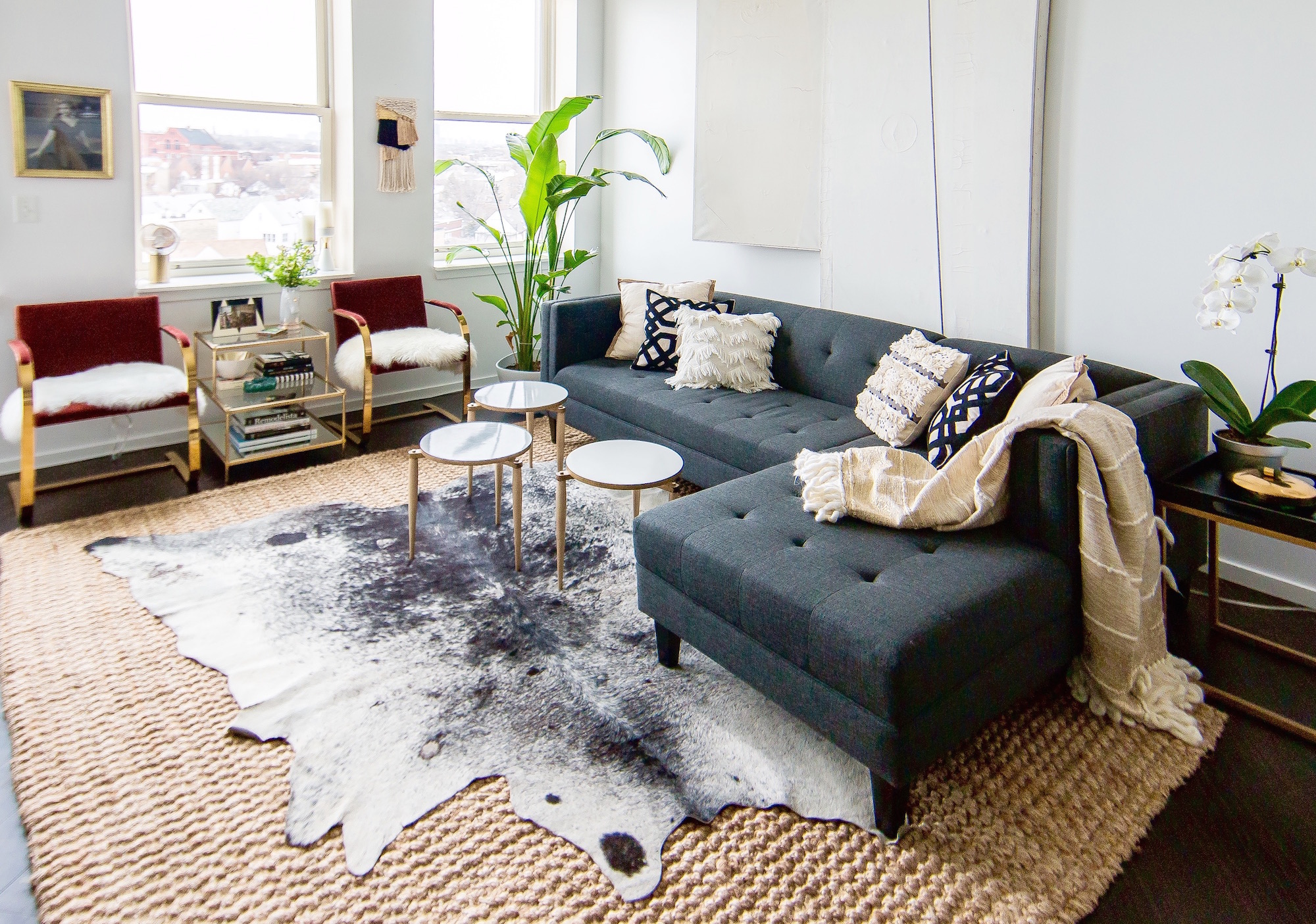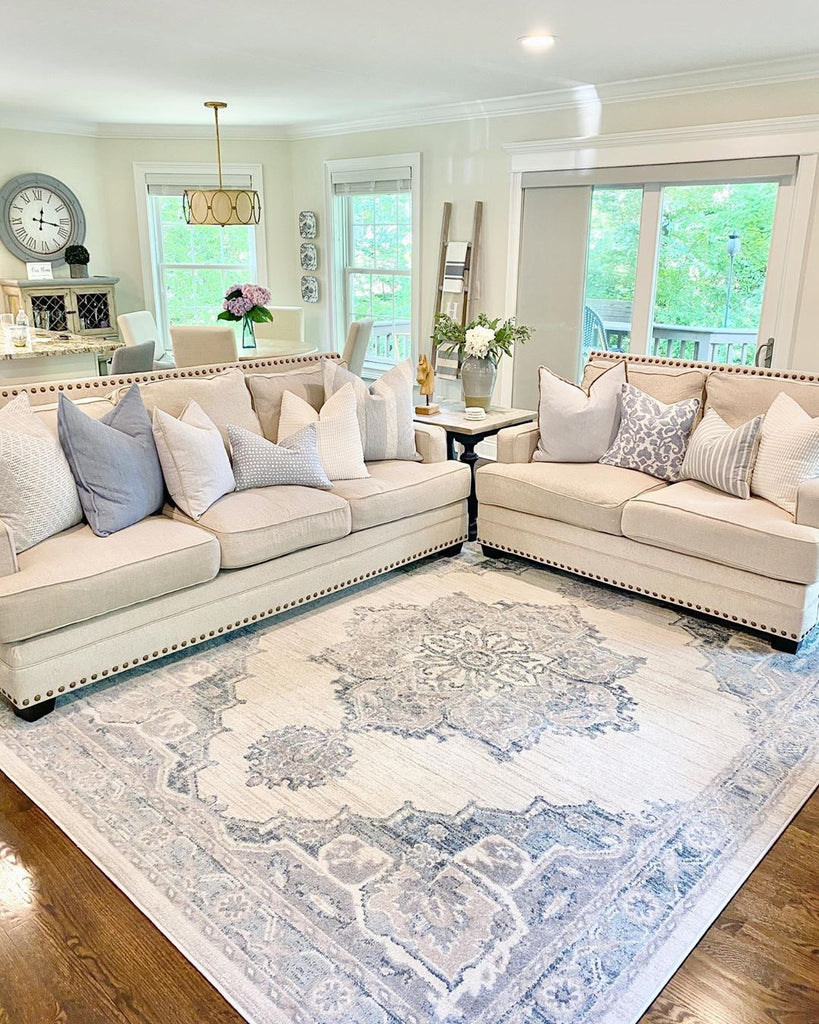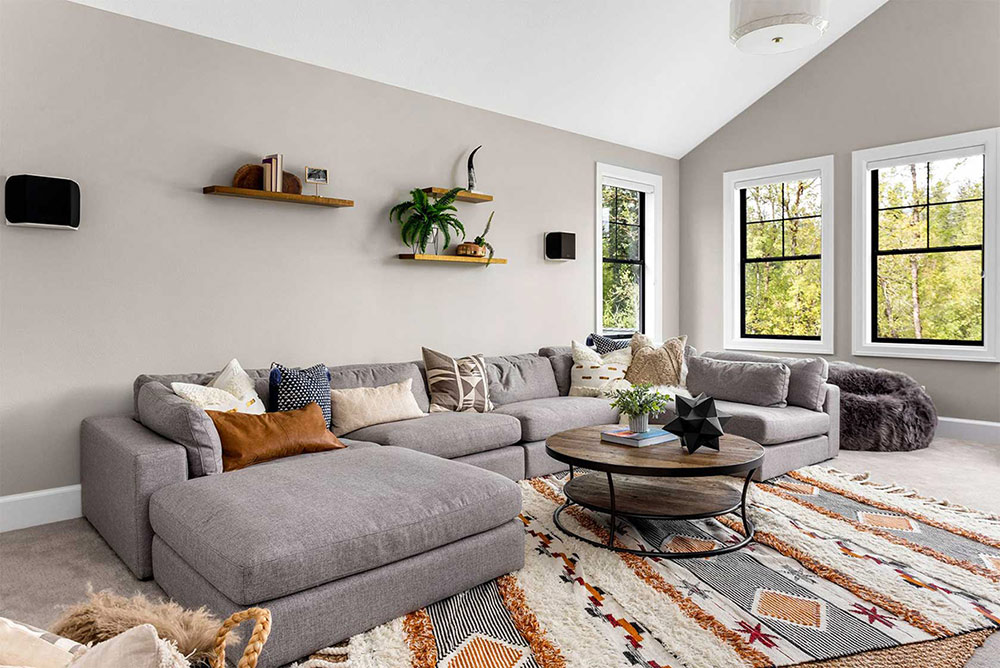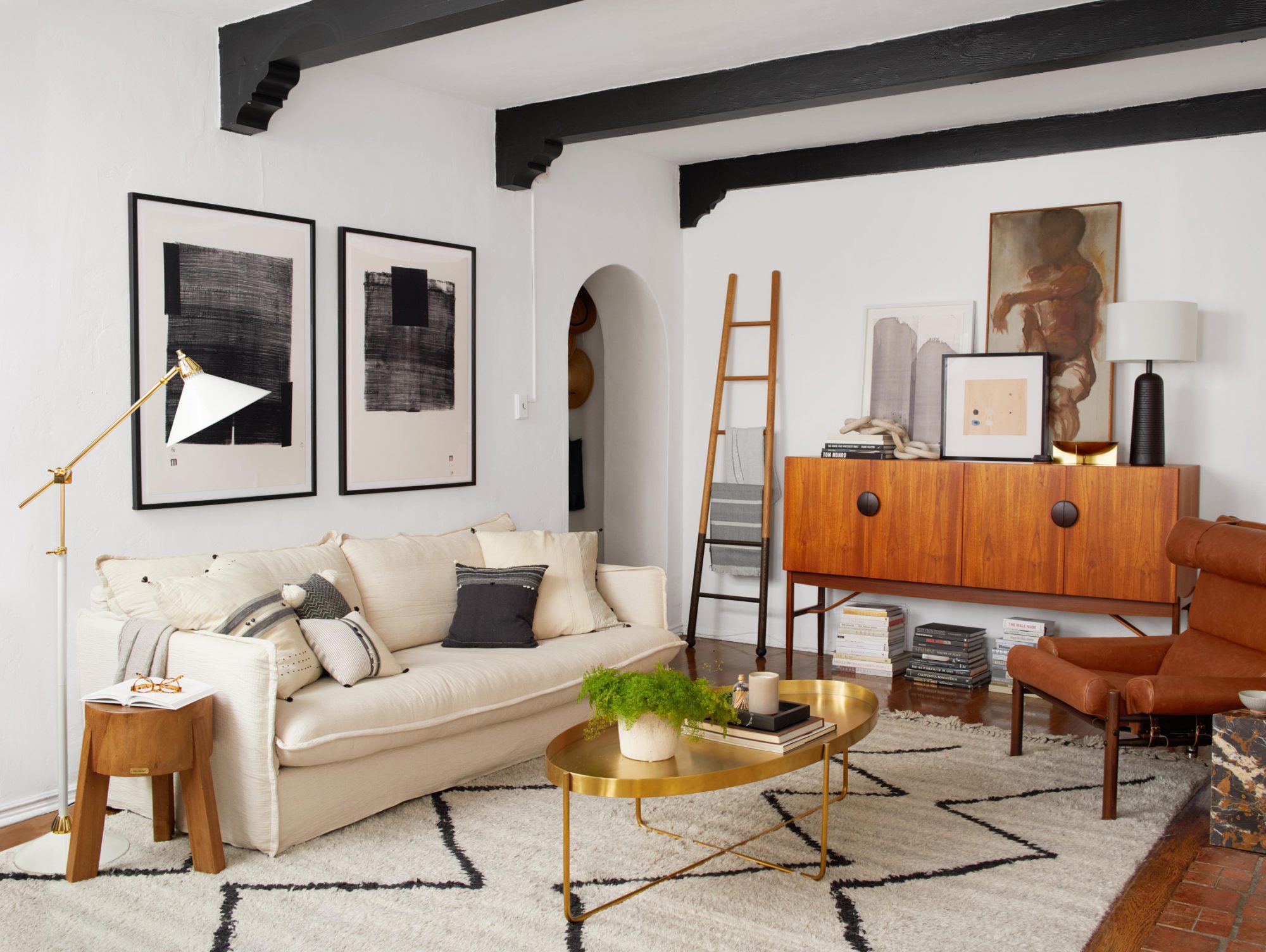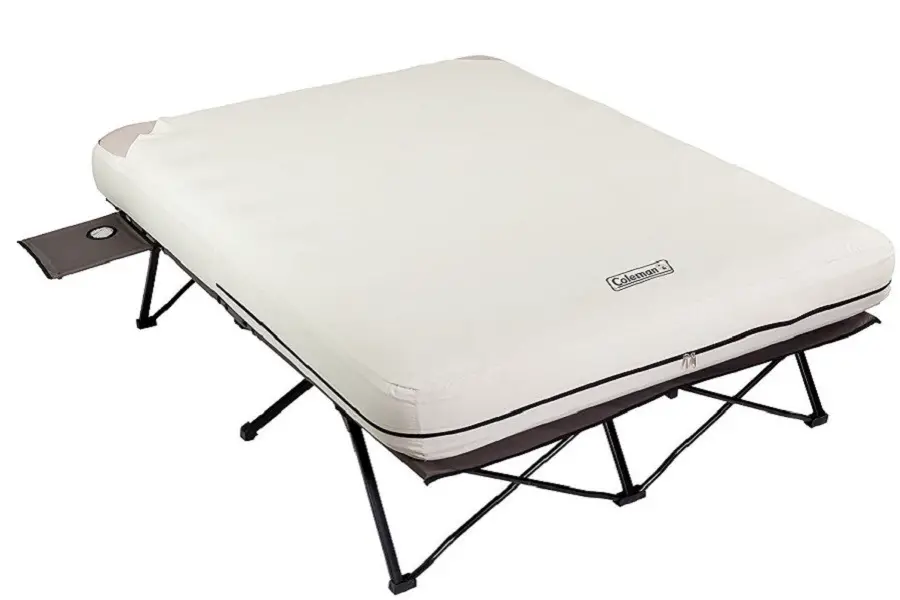1. Rug Placement in Living Room
When it comes to decorating your living room, the placement of your rug can make a big difference in the overall look and feel of the space. The right rug can tie the room together and add warmth and texture, while the wrong placement can make the room feel disjointed and awkward. So, what is the best placement for a rug in your living room?
The general rule of thumb is to place the rug in front of the main seating area, extending beyond the edges of the furniture. This creates a cohesive and inviting space, with the rug serving as the anchor for the room. However, there are a few exceptions to this rule that can work depending on the layout of your living room.
If you have a smaller living room, you can also opt for a smaller rug that sits in the center of the seating area, with the furniture legs just touching the edges. This can create a cozy and intimate feel to the space. Alternatively, you can also place a larger rug underneath all the furniture in the room, creating a more expansive and open look.
2. Living Room Rug Size Guide
Choosing the right size rug for your living room is crucial for achieving a balanced and well-designed space. The size of your rug will depend on the size and layout of your living room, as well as the placement of your furniture. Here is a general rule of thumb to follow when determining the size of your living room rug:
For a rug in front of the main seating area: The rug should be large enough to fit all the furniture legs on top of it, with a few inches of space on either side. This ensures that the rug is proportionate to the furniture and creates a cohesive look.
For a rug under all the furniture: The rug should be large enough to fit all the furniture completely on top of it, with at least 12-18 inches of space between the edge of the rug and the walls. This creates a visually appealing and well-proportioned space.
Keep in mind that these are just general guidelines and you should always consider the specific dimensions and layout of your living room when choosing a rug size.
3. How to Choose the Right Rug for Your Living Room
When it comes to choosing the right rug for your living room, there are a few factors to consider. The first is the style and design of the rug. You want to choose a rug that complements the overall aesthetic of your living room and adds to the overall decor. This could be a bold and colorful rug to add a pop of color, or a neutral and textured rug to add depth and warmth.
The second factor to consider is the material of the rug. Different materials have different qualities and textures, so it's important to choose one that fits your lifestyle and needs. For example, a plush and cozy wool rug may be perfect for a cozy living room, but not ideal for a high-traffic area. Alternatively, a durable and easy-to-clean synthetic rug may be better for a busy household.
Lastly, consider the maintenance and care of the rug. Some materials and designs may require more frequent cleaning and care, while others may be low maintenance. Make sure to choose a rug that fits your lifestyle and is easy to maintain.
4. Living Room Rug Dos and Don'ts
When it comes to decorating with rugs in your living room, there are a few dos and don'ts to keep in mind. These tips can help you avoid common mistakes and create a well-designed and functional space.
Do:
5. Best Materials for Living Room Rugs
As mentioned before, the material of your living room rug is an important factor to consider. Here are some of the best materials for living room rugs:
Wool: Wool is a popular choice for rugs as it is durable, soft, and naturally stain-resistant. It also adds warmth and texture to a space.
Silk: Silk rugs are known for their luxurious and elegant feel. They are soft and shiny, but also more delicate and require more upkeep.
Synthetic: Synthetic materials such as nylon and polyester are great for high-traffic areas as they are durable and easy to clean. They also come in a variety of colors and designs.
Cotton: Cotton rugs are affordable and easy to clean, making them a great option for busy households. However, they are not as durable as other materials and may require frequent replacement.
6. How to Layer Rugs in a Living Room
Layering rugs is a great way to add texture and visual interest to your living room. Here are some tips for effectively layering rugs:
Mix textures: Layer a fluffy or shaggy rug over a flat-woven or natural fiber rug for a cozy and layered look.
Vary the sizes: Choose rugs in different sizes, with the larger rug serving as the base and the smaller rug layered on top.
Experiment with shapes: Don't be afraid to mix and match different rug shapes, such as round and rectangular, for a unique and playful look.
7. Living Room Rug Color Ideas
Choosing the right color for your living room rug can be a daunting task, but it can also be a fun way to add personality and style to your space. Here are some color ideas to consider:
Neutral tones: A neutral rug in beige, grey, or cream can add warmth and texture without overpowering the room.
Bold and bright: If you want to make a statement, choose a rug in a bold and vibrant color like red, blue, or yellow. This can add a pop of color and personality to your living room.
Patterns: A patterned rug can add visual interest and depth to a room. Consider a geometric or floral design for a modern and chic look.
8. Tips for Cleaning and Maintaining Living Room Rugs
To keep your living room rug looking its best, it's important to regularly clean and maintain it. Here are some tips to help you keep your rug in top condition:
Vacuum regularly: Regularly vacuuming your rug will help remove dirt and debris that can cause wear and tear over time.
Spot clean: If there are any spills or stains, make sure to clean them immediately with a gentle cleaner or by blotting with a damp cloth.
Rotate the rug: To ensure even wear, rotate your rug every few months. This will also help prevent any color fading from sunlight exposure.
Get professional cleaning: For deep cleaning, it's best to hire a professional to ensure your rug is properly cared for and maintained.
9. How to Incorporate Rugs into Your Living Room Decor
Rugs can serve as a focal point and add character to your living room decor. Here are some ideas for incorporating rugs into your overall design:
Layer textures: As mentioned before, layering rugs can add texture and depth to your living room. Consider layering a patterned rug over a natural fiber rug for a unique and stylish look.
Create contrast: If your living room has a lot of neutral tones, consider adding a colorful and bold rug to create contrast and add personality.
Match the style: Choose a rug that complements the overall style and design of your living room. For example, a traditional rug may not work in a modern and minimalist space.
10. Common Mistakes to Avoid When Choosing a Living Room Rug
To ensure you choose the perfect rug for your living room, here are some common mistakes to avoid:
Choosing the wrong size: As mentioned before, the size of your rug is crucial for achieving a well-designed space. Make sure to measure your living room and choose a rug that fits the dimensions and layout.
Not considering the material: Different materials have different qualities and maintenance needs, so make sure to choose one that fits your lifestyle and needs.
Not mixing and matching: Don't be afraid to mix and match different rug shapes, sizes, and patterns for a unique and personalized look.
Choosing a rug that clashes with the overall design: Make sure to choose a rug that complements the overall design and aesthetic of your living room. This will ensure a cohesive and well-designed space.
Why Rugs are Essential in Your Living Room

Creating a Cozy and Inviting Space
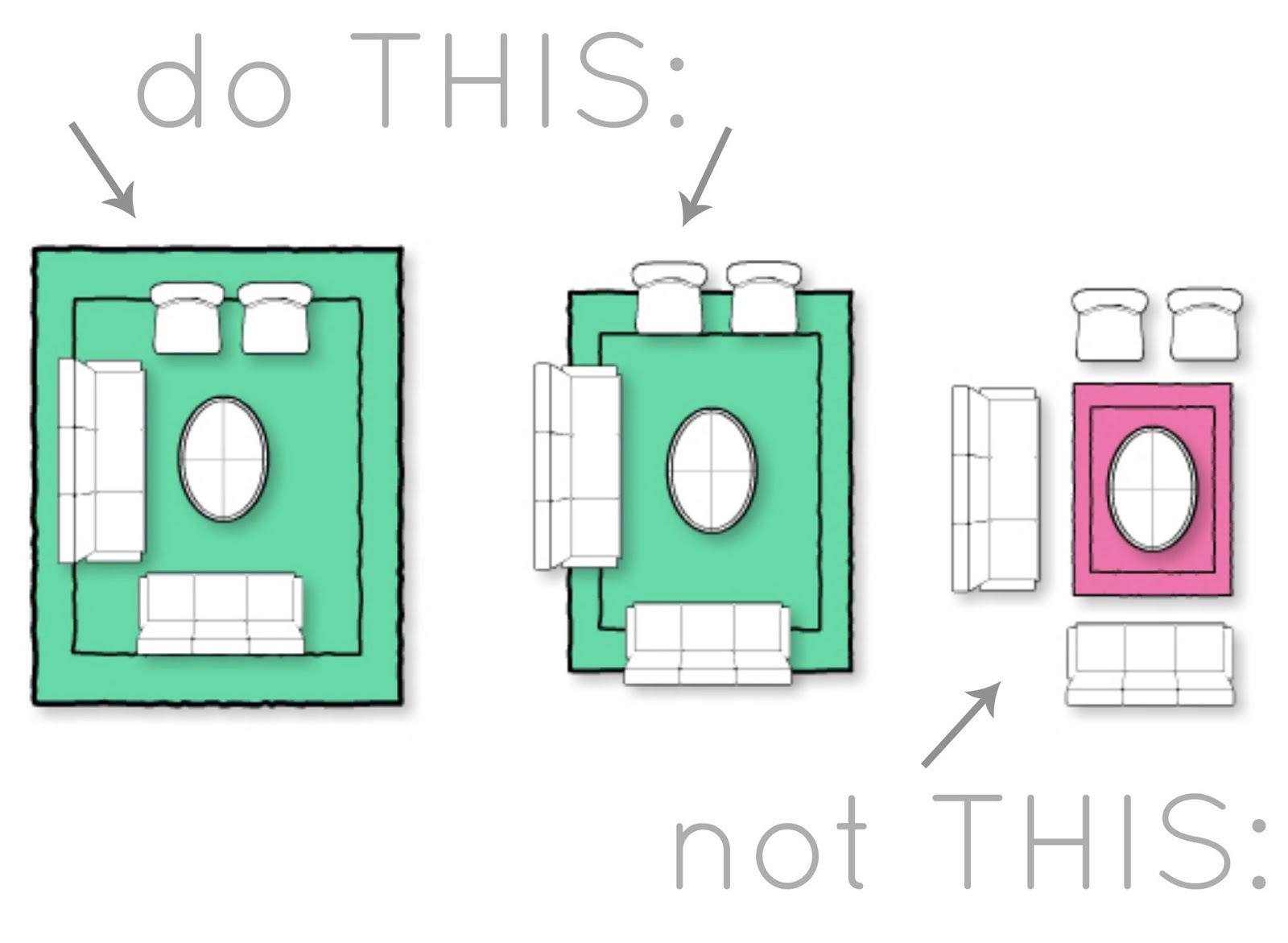 When it comes to designing your living room, one of the most important elements is a rug. Not only do they add warmth and texture to the space, but they also serve as a functional piece that ties the room together. A well-chosen rug can transform your living room into a cozy and inviting space, making it the perfect spot for relaxation and entertaining guests.
Adding a rug to your living room is a simple yet effective way to elevate the overall design and ambiance of the room.
When it comes to designing your living room, one of the most important elements is a rug. Not only do they add warmth and texture to the space, but they also serve as a functional piece that ties the room together. A well-chosen rug can transform your living room into a cozy and inviting space, making it the perfect spot for relaxation and entertaining guests.
Adding a rug to your living room is a simple yet effective way to elevate the overall design and ambiance of the room.
Defining the Space
 Another reason why rugs are essential in your living room is that they help define the space. In an open-concept layout, rugs act as visual dividers, separating the living room from other areas such as the dining room or kitchen. This creates a sense of structure and organization in your home. Moreover,
choosing the right size and shape of the rug is crucial in defining the space and creating a cohesive look.
Another reason why rugs are essential in your living room is that they help define the space. In an open-concept layout, rugs act as visual dividers, separating the living room from other areas such as the dining room or kitchen. This creates a sense of structure and organization in your home. Moreover,
choosing the right size and shape of the rug is crucial in defining the space and creating a cohesive look.
Enhancing Comfort and Acoustics
 A rug is not only aesthetically pleasing, but it also adds comfort to your living room. Walking barefoot on a soft and plush rug can be a luxurious feeling, especially during colder months. Additionally, rugs help absorb sound, making your living room a more peaceful and serene environment.
Opt for thicker and denser rugs to improve the acoustics in your living room.
A rug is not only aesthetically pleasing, but it also adds comfort to your living room. Walking barefoot on a soft and plush rug can be a luxurious feeling, especially during colder months. Additionally, rugs help absorb sound, making your living room a more peaceful and serene environment.
Opt for thicker and denser rugs to improve the acoustics in your living room.
Protecting Your Flooring
 Lastly, rugs serve as a protective layer for your flooring. High-traffic areas, such as the living room, are prone to wear and tear. A rug acts as a barrier between your furniture and the floor, preventing scratches and damage. This not only prolongs the lifespan of your flooring but also saves you from costly repairs in the long run.
Be sure to choose a durable and easy-to-clean rug for your living room.
In conclusion, rugs are essential in your living room for various reasons. They add warmth, define the space, enhance comfort and acoustics, and protect your flooring. When choosing a rug for your living room, consider the size, shape, material, and durability. With the right rug, you can create a stylish and inviting living room that reflects your personal style and enhances the overall design of your home.
Lastly, rugs serve as a protective layer for your flooring. High-traffic areas, such as the living room, are prone to wear and tear. A rug acts as a barrier between your furniture and the floor, preventing scratches and damage. This not only prolongs the lifespan of your flooring but also saves you from costly repairs in the long run.
Be sure to choose a durable and easy-to-clean rug for your living room.
In conclusion, rugs are essential in your living room for various reasons. They add warmth, define the space, enhance comfort and acoustics, and protect your flooring. When choosing a rug for your living room, consider the size, shape, material, and durability. With the right rug, you can create a stylish and inviting living room that reflects your personal style and enhances the overall design of your home.




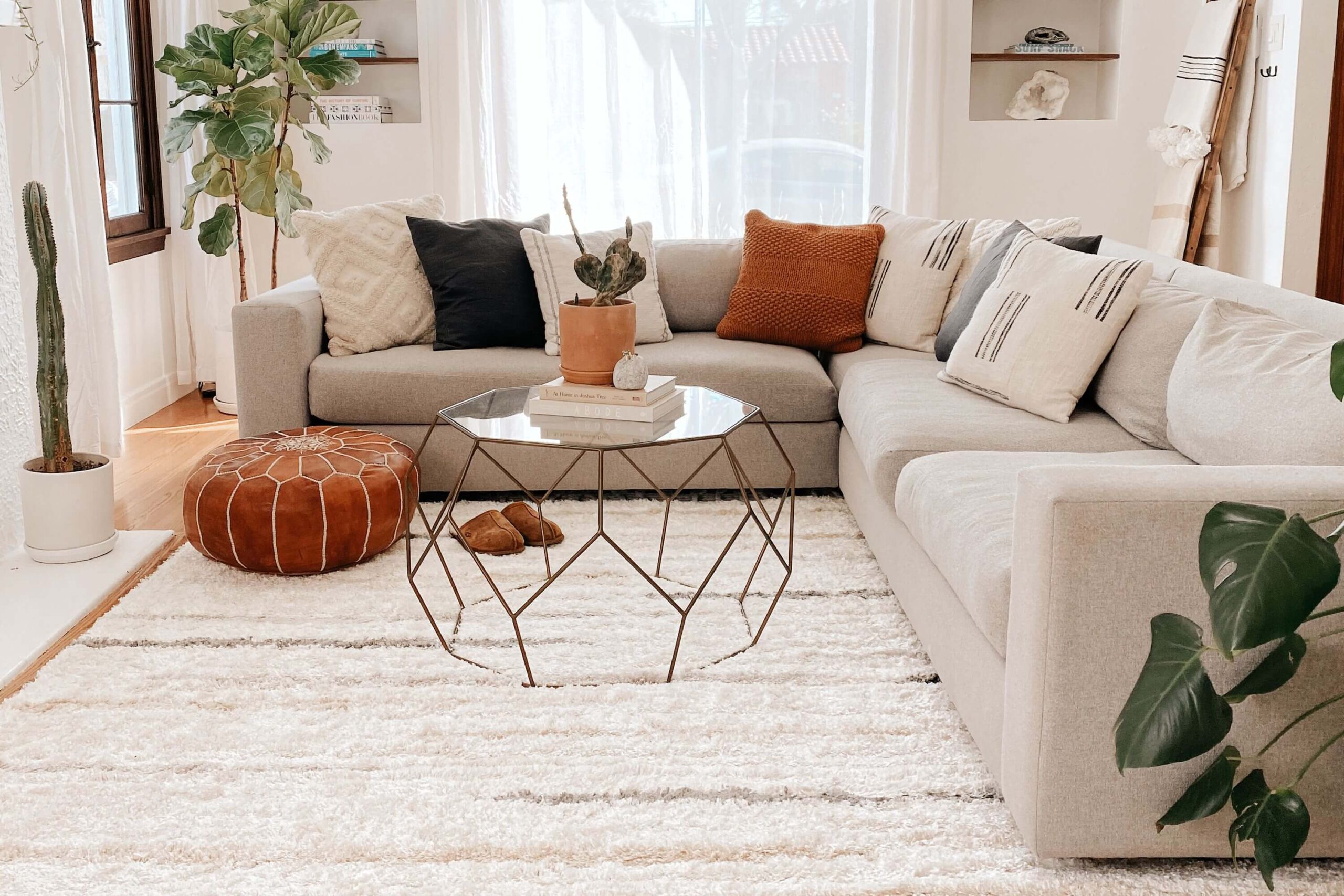

/AmyCooper-MarcellaAlanAfter1-5bef478326874b728b526bac19649802.jpg)




/GettyImages-560121127-6f2a4b00b4754dd6a999c24fed1f0c55.jpg)






















/Retouched-Laura-Genevieve-horizontal-af3b84469eb848d99572faeda9950803.jpg)

















:max_bytes(150000):strip_icc()/things-to-think-about-when-layering-rugs-4092352-hero-29854f52ce2140608d27e9530a99eeb1.jpg)

